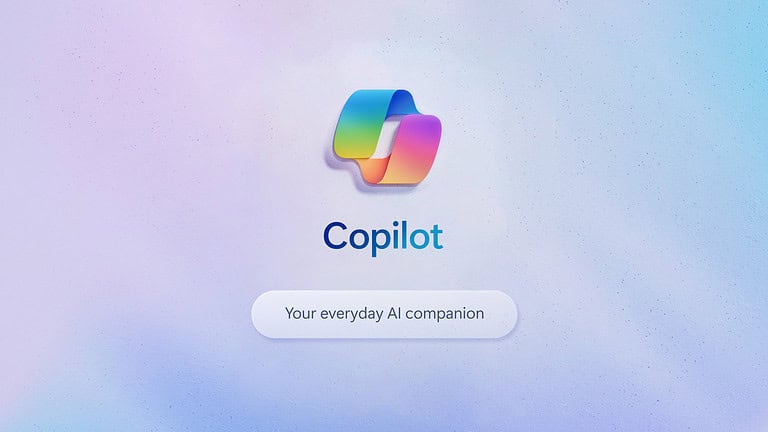
A virtual assistant is someone who works remotely to provide administrative, technical, or creative support to businesses and entrepreneurs. These professionals handle various tasks from managing emails and schedules to social media management and customer service, all without being physically present in an office. Virtual assistants provide administrative services to companies and clients remotely, offering a flexible career option that can replace traditional income sources.
Working with a virtual assistant can transform how businesses operate. They take on time-consuming tasks that would otherwise distract business owners from focusing on growth and strategy. Many virtual assistants are self-employed professionals who serve multiple clients, bringing specialized skills to each business relationship they maintain.
The demand for virtual assistants has grown significantly as remote work becomes more common. Their responsibilities vary widely depending on client needs, from handling documents and updating calendars to managing entire projects independently. This role offers flexibility for both the assistant and the businesses they support.
What Is a Virtual Assistant: Functions, Benefits, and Hiring Guide
A virtual assistant (VA) is a remote professional who provides administrative, technical, or creative support to businesses and entrepreneurs. They help streamline operations, increase productivity, and reduce workload without the need for physical office space.
Functions of a Virtual Assistant
Virtual assistants can perform a wide range of tasks, including but not limited to:
- Administrative Support: Managing emails, scheduling appointments, data entry, travel arrangements.
- Customer Service: Responding to customer inquiries, managing support tickets.
- Social Media Management: Creating and scheduling posts, engaging with followers.
- Content Creation: Writing blogs, newsletters, or marketing materials.
- Bookkeeping: Managing invoices, expense tracking.
- Research: Market research, competitor analysis.
- Technical Support: Website updates, managing CRM or other software.
Benefits of Hiring a Virtual Assistant
- Cost-Effective: Save on office space, equipment, and full-time salaries.
- Flexibility: Hire based on your current needs, scaling hours up or down.
- Increased Productivity: Delegate routine tasks and focus on core business activities.
- Access to Global Talent: Find specialists worldwide with diverse skills.
- Time Savings: Get tasks done faster without the overhead of training full-time staff.
How to Hire a Virtual Assistant: Step-by-Step Guide
- Define Your Needs
- List tasks you want to delegate.
- Determine required skills and experience.
- Choose the Type of VA
- Generalist VAs for varied tasks.
- Specialist VAs for marketing, bookkeeping, tech support, etc.
- Find Candidates
- Use platforms like Upwork, Fiverr, or dedicated VA agencies.
- Ask for referrals or search LinkedIn.
- Evaluate Applicants
- Review resumes and portfolios.
- Conduct interviews focusing on communication skills and reliability.
- Request trial tasks to assess capability.
- Set Clear Expectations
- Define working hours, communication methods, and deadlines.
- Agree on payment terms and confidentiality.
- Onboard Your VA
- Provide necessary tools and access.
- Train on your processes and software.
- Monitor and Communicate
- Use project management tools to track progress.
- Maintain regular check-ins and feedback.
Key Takeaways
- Virtual assistants work remotely to handle administrative tasks, allowing business owners to focus on growth strategies.
- The profession offers flexibility and independence while providing essential support services across various industries.
- Virtual assistant services can be customized to meet specific business needs, from basic scheduling to complex project management.
Understanding Virtual Assistants
A virtual assistant (VA) is a remote professional who provides various services to clients without being physically present in their office. They use technology to communicate, collaborate, and complete tasks efficiently while working from their own location.
Evolution of Virtual Assistants
The concept of virtual assistance emerged in the 1990s as internet technology advanced. Early VAs primarily handled basic administrative tasks like email management and scheduling. The field gained significant momentum in the early 2000s when improved internet speeds and collaborative tools made remote work more practical.
Today’s virtual assistants have evolved far beyond simple administrative support. They now leverage sophisticated technology including cloud-based platforms, project management software, and video conferencing tools to provide comprehensive services.
The COVID-19 pandemic accelerated this evolution by normalizing remote work. Companies discovered they could access talented professionals regardless of geographic location, expanding the demand for virtual assistance services worldwide.
Virtual Assistants vs. Traditional Assistants
The primary difference between virtual and traditional assistants is their work location. While traditional assistants work on-site, VAs work remotely from home offices or other locations.
Key Differences:
- Cost efficiency: VAs typically cost less as they don’t require office space or equipment
- Flexibility: VAs often work with multiple clients and flexible hours
- Specialization: Many VAs offer specialized skills in particular industries or tasks
Traditional assistants benefit from face-to-face interaction and may handle physical tasks like organizing documents or greeting visitors. However, VAs excel at digital tasks and can often be more cost-effective, especially for small businesses and entrepreneurs.
Types of Virtual Assistants
The virtual assistant field has diversified significantly to meet various business needs. Different types of VAs specialize in specific areas of expertise.
Administrative VAs handle core business operations including:
- Email management and calendar scheduling
- Data entry and document preparation
- Travel arrangements and meeting coordination
Technical VAs focus on digital expertise such as:
- Website maintenance and updates
- Social media management
- SEO optimization and analytics
Creative VAs provide content-related services including:
- Blog writing and content creation
- Graphic design and visual branding
- Video editing and production
Specialized VAs also exist for legal, medical, real estate, and other industries, offering domain-specific knowledge alongside general assistance skills. This specialization allows businesses to find remote support perfectly tailored to their unique needs.
Benefits of Virtual Assistants for Business
Virtual assistants provide numerous advantages that can transform how businesses operate and grow. They offer solutions that help companies become more efficient while reducing operational costs.
Enhancing Productivity
Virtual assistants significantly boost productivity by handling time-consuming administrative tasks. Business owners can delegate routine responsibilities like email management, calendar scheduling, and data entry to skilled professionals.
This delegation allows company leaders to focus on core business functions and strategic planning rather than getting bogged down in day-to-day operations. Many executives report gaining 10-15 hours per week after hiring a virtual assistant.
VAs can also improve organizational efficiency by implementing better systems and processes. They often bring experience from multiple industries, introducing best practices that streamline operations.
Tasks commonly handled by virtual assistants:
- Email management and correspondence
- Calendar coordination and scheduling
- Travel arrangements
- Document preparation
- Research projects
- Social media management
Cost-Effectiveness and Flexibility
Hiring virtual assistants offers remarkable cost savings compared to traditional employees. Businesses avoid expenses like office space, equipment, benefits, and training costs.
Companies typically pay only for productive work hours, avoiding downtime costs. This arrangement allows businesses to reduce operating costs dramatically while maintaining high-quality output.
The flexibility of working with VAs is unmatched. Businesses can scale hours up or down based on current needs, hiring assistance for specific projects or ongoing support as required.
Virtual assistants also provide location freedom, working across different time zones to support global operations. This geographic diversity creates business resilience and continuity.
24/7 Availability for Customer Support
One powerful advantage of virtual assistants is their ability to provide round-the-clock customer service coverage. By hiring VAs in different time zones, businesses can offer support well beyond traditional office hours.
This extended availability significantly improves customer satisfaction. Questions and problems get addressed promptly without making customers wait until the next business day.
Virtual assistants can manage multiple communication channels simultaneously:
- Email inquiries
- Live chat support
- Social media responses
- Phone calls
- Help desk ticket management
The ability to monitor markets and listen for conversations on social media helps businesses remain responsive to customer needs and market trends.
Scalability for Business Growth
Virtual assistants provide an ideal solution for growing companies. As business demand increases, companies can easily add more VA support without the complications of traditional hiring.
This scalability allows businesses to respond quickly to market opportunities. A company can temporarily increase support during busy seasons or product launches without long-term commitments.
VAs also help businesses expand into new markets by providing local knowledge and language skills. Their diverse expertise allows companies to test new services or products with minimal investment.
For startups and small businesses, virtual assistants offer enterprise-level support without enterprise-level costs. They provide access to specialized skills that would otherwise be unaffordable for growing companies.
Applications of Virtual Assistants
Virtual assistants offer versatile solutions across various business functions. They handle specialized tasks while working remotely, providing flexibility and cost-effectiveness for businesses of all sizes.
Customer Service and Experience
Virtual assistants excel in managing customer support interactions across multiple channels. They respond to common inquiries, troubleshoot basic issues, and direct complex problems to appropriate departments.
Many businesses employ virtual assistants to:
- Monitor and respond to social media comments
- Process returns and refunds
- Gather customer feedback
- Update customer information in CRM systems
These professionals help maintain consistent communication with customers even outside regular business hours. This responsiveness significantly improves customer satisfaction rates.
Virtual assistants often create and maintain FAQ documents based on common customer questions. They can also analyze customer interaction data to identify trends and improvement opportunities.
Administrative Tasks and Email Management
Virtual assistants handle essential administrative functions that keep businesses running smoothly. They manage email correspondence by sorting, responding to, and organizing messages according to priority.
Common administrative responsibilities include:
- Document preparation and formatting
- Data entry and database maintenance
- Filing and organization of digital documents
- Processing invoices and expense reports
Many virtual assistants also transcribe meetings and create detailed summaries. This allows team members to focus on core business activities rather than administrative work.
Email management often includes filtering spam, flagging urgent messages, and drafting responses for approval. These tasks ensure nothing falls through the cracks in busy communication channels.
Appointment Scheduling and Calendar Management
Efficient scheduling is a cornerstone of virtual assistant services. They coordinate meetings across different time zones and manage executives’ calendars to maximize productivity.
Virtual assistants typically:
- Set up video conferences and send meeting invitations
- Confirm appointments with clients and partners
- Schedule follow-up meetings based on outcomes
- Block preparation time before important meetings
They often use specialized scheduling tools that integrate with calendar applications. These tools reduce the back-and-forth communication typically required for booking appointments.
Virtual assistants also handle travel arrangements and itinerary planning. They coordinate flights, accommodations, and transportation to ensure smooth business travel experiences.
Marketing and Customer Outreach
Virtual assistants support marketing efforts by managing various outreach activities. They maintain contact lists, schedule email campaigns, and track marketing metrics.
Key marketing responsibilities include:
- Social media content scheduling and posting
- Newsletter preparation and distribution
- Lead generation and qualification
- Basic graphic design for promotional materials
Virtual assistants often monitor competitor activities and industry trends. This information helps businesses adjust their marketing strategies accordingly.
Many virtual assistants also coordinate with influencers and manage affiliate marketing programs. They track promotional codes and analyze the effectiveness of different marketing channels.
Virtual Assistants in Specific Industries
Virtual assistants are making significant impacts across various sectors by handling specialized tasks and improving operational efficiency. These remote professionals adapt their skills to meet the unique demands of different industries.
Healthcare Sector
In healthcare, virtual assistants perform crucial administrative functions that allow medical professionals to focus more on patient care. They manage appointment scheduling, insurance verification, and medical billing processes with precision and confidentiality.
Virtual assistants in healthcare often handle patient communication by sending appointment reminders and following up after visits. This helps reduce no-shows and improves overall patient satisfaction.
Many healthcare VAs are trained in medical terminology and HIPAA compliance, making them valuable assets for maintaining accurate electronic health records. They can transcribe medical notes, organize patient files, and ensure all documentation meets regulatory standards.
Some specialized healthcare virtual assistants even assist with telehealth coordination, managing virtual waiting rooms and providing technical support to patients accessing remote care services.
Education Sector
Educational institutions increasingly rely on virtual assistants to streamline administrative workloads and enhance student experiences. VAs handle enrollment processing, respond to student inquiries, and manage educational content across various platforms.
These assistants often support faculty by preparing course materials, conducting research, and grading standardized assessments. This allows teachers and professors to dedicate more time to instruction and student interaction.
For online learning environments, virtual assistants provide technical support, monitor student participation, and facilitate virtual classroom activities. They help create engaging digital learning materials and ensure smooth operation of educational technology.
Many education-focused VAs also assist with student recruitment efforts, managing communication with prospective students and organizing virtual campus tours. They track application processes and provide timely updates to applicants throughout the admissions cycle.
Integrating Virtual Assistants into Workflows
Successful integration of virtual assistants transforms how businesses handle daily operations by combining automation with personalized support. Virtual assistants streamline operations and allow teams to focus on strategic work rather than repetitive tasks.
Automation of Routine Processes
Virtual assistants excel at automating repetitive tasks that consume valuable time. These professionals can manage email correspondence, schedule appointments, organize digital files, and handle data entry without constant supervision.
Modern virtual assistants often use AI-powered tools to enhance their capabilities and improve workflow efficiency. For example, they might implement:
- Smart scheduling systems that automatically find meeting times
- Document management tools that organize files using AI categorization
- Customer service automation for handling routine inquiries
The key advantage is consistency. Virtual assistants execute processes with reliable precision, reducing human error in routine operations. This standardization is particularly valuable for businesses with established procedures that need consistent implementation.
Optimizing Time Management
A virtual assistant for workflow and pipelines serves as a powerful time management resource. They help businesses reclaim hours previously lost to administrative tasks.
Effective time optimization typically involves:
- Task prioritization – VAs help identify and focus on high-value activities
- Delegation planning – Strategic assignment of appropriate tasks to assistants
- Process documentation – Creating efficient systems for recurring responsibilities
Companies can streamline their virtual assistant workflow by establishing clear communication channels and expectations. This might include regular check-ins, shared project management tools, and documented standard operating procedures.
The flexibility of remote collaboration allows businesses to access support during different time zones, enabling continuous productivity. Teams can delegate end-of-day tasks to assistants in different time zones, waking up to completed work the next morning.
Challenges and Considerations
While virtual assistants offer numerous benefits, they come with important challenges that businesses and individuals should understand. Addressing these issues proactively helps maximize the value of virtual assistant relationships.
Privacy and Security
Data protection remains a critical concern when working with virtual assistants. Both AI assistants and human virtual assistants handle sensitive information that requires safeguarding.
Organizations should implement:
- Strong access controls for virtual assistants
- Encrypted communication channels when sharing confidential data
- Clear data handling policies that outline what information can be accessed
- Regular security audits to identify vulnerabilities
Human virtual assistants should sign confidentiality agreements before beginning work. For AI assistants, users must understand what data is being collected and stored.
Companies utilizing virtual assistants for customer inquiries should establish protocols for handling personal information. This includes training on privacy regulations like GDPR or CCPA.
Human-AI Interaction
Effective collaboration between humans and virtual assistants requires clear communication and realistic expectations. Misunderstandings can lead to frustration and reduced productivity.
Common interaction challenges include:
- Language barriers with international assistants
- Time zone differences affecting response times
- Cultural nuances influencing communication styles
- Technical terminology confusion during troubleshooting
Organizations should develop detailed onboarding processes that establish communication preferences. Regular check-ins help identify misunderstandings before they become problems.
For AI assistants, users must learn effective prompting techniques. Understanding an AI’s limitations prevents unrealistic expectations. Many companies implement training on how to work efficiently with virtual assistants.
Selecting the Right Virtual Assistant
Finding the appropriate virtual assistant involves matching skills with organizational needs. The wrong fit can result in wasted resources and suboptimal outcomes.
Key selection factors include:
- Technical proficiency with required software platforms
- Industry-specific knowledge relevant to assigned tasks
- Availability that aligns with business hours
- Communication style compatibility with company culture
Connectivity issues should be addressed during the selection process. Virtual assistants require reliable internet and appropriate hardware to maintain productivity.
Companies should develop a structured interview process that tests practical skills. Trial periods allow both parties to evaluate the working relationship before making long-term commitments.
When choosing AI assistants, organizations should compare capabilities across platforms and determine which best addresses their specific needs.
The Future of Virtual Assistants
Virtual assistants are evolving rapidly with technological advances. They’re becoming smarter, more capable, and increasingly integrated into our daily lives.
Advancements in AI and Machine Learning
The next generation of virtual assistants will leverage advanced artificial intelligence to understand and respond to requests with near-human comprehension. These intelligent virtual assistants (IVAs) will process natural language more effectively, recognizing context, emotions, and subtle nuances in communication.
Machine learning algorithms will enable these assistants to:
- Learn user preferences automatically
- Anticipate needs before they’re expressed
- Improve accuracy with each interaction
- Handle complex, multi-step tasks independently
Virtual assistants will soon feature Language Processing Units that dramatically enhance their ability to understand human speech patterns and intentions. This technology will make interactions feel more conversational and less robotic.
The gap between chatbots and true virtual assistants will continue to widen as IVAs develop deeper reasoning capabilities and emotional intelligence.
Increasing Role in Personal Tasks
Virtual assistants are becoming essential partners rather than simple tools. They will handle an expanding range of personal responsibilities, from managing calendars to coordinating home automation systems.
Some growing areas for virtual assistant services include:
- Social media management
- Content creation
- Graphic design
- IT support
- Email filtering and response
These assistants will automate repetitive tasks like scheduling appointments and managing communications, freeing users for more valuable activities. They’ll also serve as personal advisors, offering recommendations based on accumulated knowledge about preferences and behaviors.
The technology will make daily life simpler by acting as centralized hubs that coordinate various digital services and smart devices. Home and work environments will become more streamlined as virtual assistants take on greater decision-making responsibilities.
Hiring and Managing a Virtual Assistant
Finding and working with the right virtual assistant involves clear planning and effective communication. The process requires understanding your needs, conducting a thorough hiring process, and implementing management strategies that work for remote relationships.
Determining Your Needs
Before starting your search for a virtual assistant, clarify exactly what tasks you need help with. Make a list of your daily, weekly, and monthly responsibilities that could be delegated.
Common tasks virtual assistants handle include:
- Email management and inbox organization
- Calendar scheduling and appointment setting
- Data entry and basic bookkeeping
- Social media management
- Customer service support
Determine how many hours of assistance you need weekly and your budget constraints. Consider which skills are must-haves versus nice-to-haves.
Think about the type of working relationship you prefer. Some businesses need specialized VAs with industry knowledge, while others require general administrative support.
The Process of Hiring a Virtual Assistant
Start by deciding between hiring an independent contractor directly or working through a virtual assistant agency. Agencies offer pre-vetted professionals but typically cost more than direct hires.
Create a detailed job description outlining:
- Required skills and experience
- Specific tasks and responsibilities
- Hours and availability expectations
- Communication preferences
- Compensation structure
When reviewing applications, look for candidates with experience in remote work environments. Request samples of previous work and check references thoroughly.
During interviews, assess communication skills and problem-solving abilities. Consider assigning a small paid test project to evaluate their work quality and responsiveness.
Best Practices for Management
Establish clear communication channels from day one. Decide which tools you’ll use for messaging, video calls, and project management.
Set up a structured onboarding process with:
- Detailed documentation of procedures
- Access to necessary accounts and tools
- Regular check-in schedule
- Clear expectations about response times
When delegating tasks, provide specific instructions and examples of desired outcomes. Avoid micromanaging but remain available for questions.
Regular feedback sessions help build a stronger working relationship. Acknowledge good work and discuss areas for improvement constructively.
For ongoing success, invest in your VA’s professional development. Share resources relevant to their role and encourage growth in areas that benefit both parties.
Frequently Asked Questions
Many people wonder about the qualifications, tasks, and income potential for virtual assistants. Understanding the essential skills and training options can help those interested in pursuing this career path.
What qualifications are required to become a virtual assistant?
A virtual assistant typically doesn’t need formal qualifications. Many successful VAs have a high school diploma or equivalent, though some have associate’s or bachelor’s degrees.
Technical proficiency with common business software and excellent organizational skills are more important than formal education. Virtual assistants are typically independent contractors who need practical skills rather than specific certifications.
Experience in administrative roles can be valuable but isn’t mandatory. Strong communication skills and self-discipline are essential for remote work success.
What types of tasks does a virtual assistant typically perform?
Virtual assistants handle a wide range of administrative and technical tasks. They often manage email inboxes, schedule appointments, and coordinate meetings for their clients.
Many VAs also provide professional support with social media management, customer service, bookkeeping, and data entry. According to industry professionals, VAs frequently help with sorting emails and managing inboxes.
Technical tasks might include website updates, graphic design, or managing online platforms. The specific duties vary based on client needs and the VA’s expertise.
How can one find virtual assistant opportunities?
Freelance platforms like Upwork, Fiverr, and Freelancer offer numerous virtual assistant job listings. Creating profiles on these sites can help connect with potential clients.
Networking through LinkedIn and professional groups often yields quality opportunities. Many VAs find success by joining industry-specific Facebook groups where business owners seek assistance.
Direct outreach to small businesses and entrepreneurs can also be effective. Creating a professional website showcasing services and testimonials helps attract clients looking for administrative and technical support.
What training or courses are recommended for aspiring virtual assistants?
Courses in digital marketing, bookkeeping, and project management are valuable for aspiring VAs. Programs teaching office productivity software like Microsoft Office or Google Workspace provide essential technical skills.
Professional communication and time management courses enhance service quality. VA-specific training programs offered by established virtual assistants often cover both technical skills and business operations.
Free resources like YouTube tutorials and blogs can supplement formal training. Continuous learning is important as technology and business needs evolve.
What is the average income range for a virtual assistant?
Entry-level virtual assistants typically earn $15-25 per hour. Experienced VAs with specialized skills can command $30-50+ hourly rates.
Rates vary significantly based on location, expertise, and client industry. VAs with technical specialties like web development or advanced digital marketing often earn premium rates.
Many virtual assistants offer package pricing rather than hourly rates. Monthly retainer agreements ranging from $500-$2,000 are common in the industry.
What essential skills should a virtual assistant possess to be successful?
Strong written and verbal communication skills are critical for effective client interactions. Time management and organization ensure deadlines are met and tasks completed efficiently.
Technical proficiency with common business software is essential. Virtual assistants must be comfortable with using technology for remote collaboration and task completion.
Problem-solving abilities and adaptability help VAs handle unexpected challenges. Self-motivation and discipline are necessary since most work independently without direct supervision.






